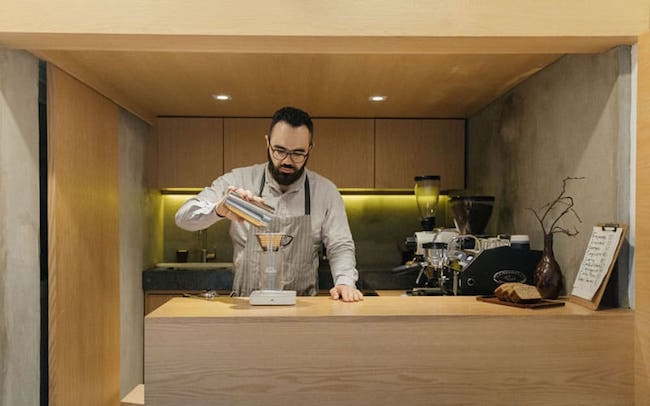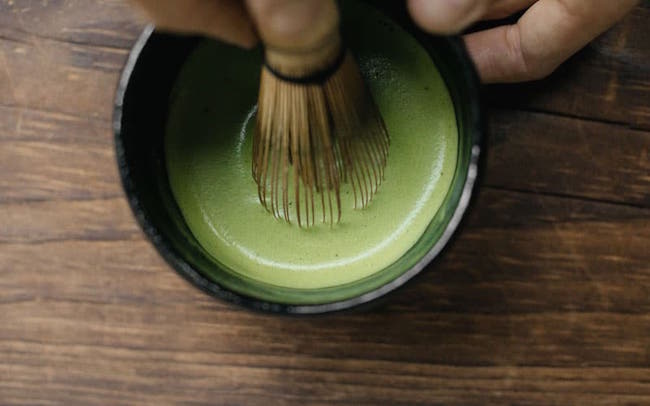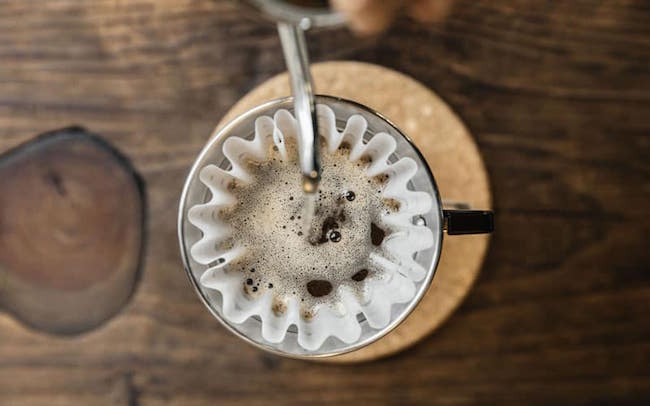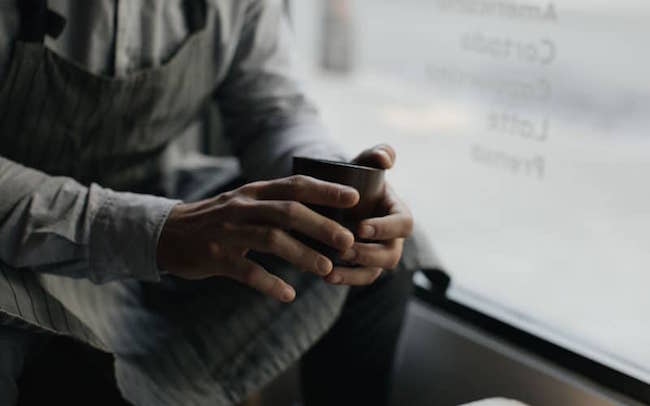Mauricio Zubirats worked as a chef in several places, including Noma, before opening Raku in Mexico City. Thanks to the small establishment, he materialized his dream of making the best coffee in the city.
Raku is a 10 square meter coffee shop that started in the most basic way—with one coffee machine. From that moment on, it slowly grew to be what it is today: the place where the perfect espresso does exist. This is because Mauricio is obsessed with finding and making the best coffee in the world.

Lover of Japanese culture since childhood, particularly tea ceremonies, Mauricio studied in Tokyo to learn the skills necessary for opening a coffee shop like Raku, where everything is intuitive, high quality, and minimal.
One of the most important reasons for the establishment’s creation is tea. Yes, tea. In fact, Raku’s secret is that coffee is merely the pretext for selling matcha tea and Hojicha (roasted green tea), which is brought every two weeks directly from a tea brand in Kyoto called Ippodo that has been around for centuries.

In addition, the space is completely DIY. The decoration, coffee selection, and customer service are personal, given that the only person behind the counter is Mauricio Zubirats. As a result, the spot is only open when he is behind the bar, which is why the hours may seem odd at first (Monday to Friday from 8 am to 12:50 and from 2 to 7 pm).
Raku only has what is essential and necessary. Nothing is ever left over or lacking. The menu merely consists of espresso, latte, coffee of origin (sometimes Mexican, sometimes foreign), Vietnamese coffee (the strangest choice with condensed and evaporated milk, cold brew tonic, and tea). But we also have to make an honorable mention to the conchas that are baked at Contramar. The rest of the bread is from Pancracia.

Many locals pass by for their daily coffee, but as a result of the excellent reviews online, many foreigners also visit. It is a place made for people in search of the best coffee.
Although it would seem that making coffee is a very simple process, it is actually a delicate and voluptuous art for those who know it well. To begin with, calibrating the machine depending on the grain is complicated. There exists a non-linear relationship between grinding, extraction time, and the final product. When one grinds coffee, the density, temperature, and humidity are affected, which results in softness or hardness. Depending on the hardness, oils and essential flavors that mix with water are extracted. In fact, the first coffee is always the hardest to make. For instance, Mauricio tells us that sometimes it takes him up to half an hour since he considers that there is always something to learn from the process.

Address: Sinaloa 188, Colonia Roma Norte
Website
Adapted and translated by Evan Upchurch
Photos: Maureen M. Evans
Follow Evan on Instagram
***
Other articles that may interest you:
Niddo, a Restaurant Inspired by World Travels
Three Mother-Daughter Lunch Spots in Mexico City
Panadería García Madero, the Best Bakery in Condesa






